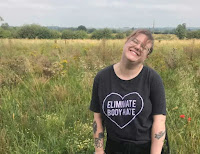Study shows threefold rise in bisexual behavior among Americans
A study published in The Journal of Sex Research uncovered a significant rise in the number of Americans identifying as bisexual or reporting bisexual behaviors, especially in recent years.
uncovered a significant rise in the number of Americans identifying as bisexual or reporting bisexual behaviors, especially in recent years.

 |
| I'm not lesbian. I'm but call myself abrosexual. |
While acceptance of same-sex sex sexuality and marriage has notably increased, bisexuality has remained somewhat in the shadows, with less clarity around its trends and behaviors.
This gap prompted researchers to delve into nationally representative samples to map out the landscape of bisexuality.
For their study, the researchers utilized the wealth of data provided by the General Social Survey (GSS). The GSS, a cornerstone of social science research, has been gathering data on the attitudes, behaviors, and characteristics of the American public since 1972.
The research team analyzed responses from a substantial sample of 32,238 respondents who completed the GSS between 1989 and 2018, along with an additional 2,313 respondents from the 2021 wave.
 |
| The End of Gender will mean the end of gay? |
The study employed four measures based on sexual behavior and one measure based on identity.
Starting in 1989, the GSS included questions about the number of male and female partners respondents had since turning 18, which the researchers used to categorize respondents into groups based on the sex of their sexual partners.
Additionally, from 2008 onwards, the GSS began asking respondents to identify their sexual orientation, offering options like “gay, lesbian, or homosexual,” “bisexual,” and “heterosexual or straight.”
These indicators allowed the researchers to track changes in how people report their sexual orientation and behaviors over time.
The researchers found that the proportion of respondents reporting partners of both sexes since age 18 experienced a notable increase over time.
Specifically, the study documents a threefold rise in such reports, moving from 3.1% in the 1989–1994 waves to 9.3% in the 2012–2018 waves.
- [So as has been reported for years, about 10% of the population will behave in a "gay" way, with "gay" being defined as purposely (as opposed to forcibly) engaging in any kind of erotic behavior or "experimentation" with a member of the same biological sex, whatever the rationalization for doing so. This would include all bisexual behavior but exclude rape or non-consensual assault.]
 |
| Bis are sick. I'm trans, so I go only date men. |
Interestingly, the proportion of individuals identifying as bisexual surpassed those identifying as gay or lesbian in the more recent cohorts, underscoring the growing visibility and acknowledgment of bisexuality as a legitimate sexual orientation.
 |
| I don't like "butch" and "dyke." Call me abro. |
Some individuals who had sexual partners of both sexes did not necessarily identify as bisexual [though we would objectively categorize them as such regardless of their subjective claims], which points to the nuanced ways in which sexual orientation is experienced and understood.
“There are several likely explanations for this,” the researchers wrote. “First, sexual behavior can be exploratory, taking place before a person has clarified their own sexual orientation identity, a process that continues throughout young adulthood. Our measure likely captures gay and lesbian persons who had partners of a different sex before they came out or clarified their sexual orientations, which can occur later in life.”
“Second, sexual orientation can be fluid [like when you're just act out gay impulses on weekends or when drinking or intoxicated?], with some people changing their sexual behavior and/or their sexual orientation identities over time. In both of these cases, using the sex of sexual partners since age 18 measure means that we may be capturing sexual experiences that have taken place many years ago, especially for older respondents.
“Finally, even persons who have more recently had partners of both sexes may not consider themselves bisexual [because of the embarrassment that would cause to be lumped into the LGBTQIA+ cohort, where Q does not mean "queer" but "questioning" or even "quasi" by society], and the term may not fit their understandings of themselves and their sexual behavior [or at least not that they would want to admit it].”
The study also shed light on demographic variations in the reporting of sexual orientation and behavior.
Younger individuals and women were more likely than their older and male counterparts to report partners of both sexes and to identify as bisexual.
 |
| What? We don't have to identify. We can pass. |
There were no significant differences in the reporting of bisexuality among different racial and ethnic groups, suggesting that the increase in bisexuality may be a widespread phenomenon across diverse communities in the United States.
“The proportion of persons identifying as bisexual and the proportion of persons who report engaging in sex with partners of both sexes in the U.S. have increased markedly since 1989,” the researchers concluded.
 |
| Ryan Seacrest doesn't like labels. |
- [Yeah, why call yourself "gay," which has a clear stigma when you can just get away with saying "fluid," "heteroflexible," "questioning," "unsure," "I just like people for people and don't see sex," or any other hedge, rationalization, excuse, or alternative to accurate reporting?]
The study, “The Rise of Bisexuality: U.S. Representative Data Show an Increase Over Time in Bisexual Identity and Persons Reporting Sex with Both Women and Men,” was authored by Martin A. Monto and Sophia Neuweiler.


No comments:
Post a Comment